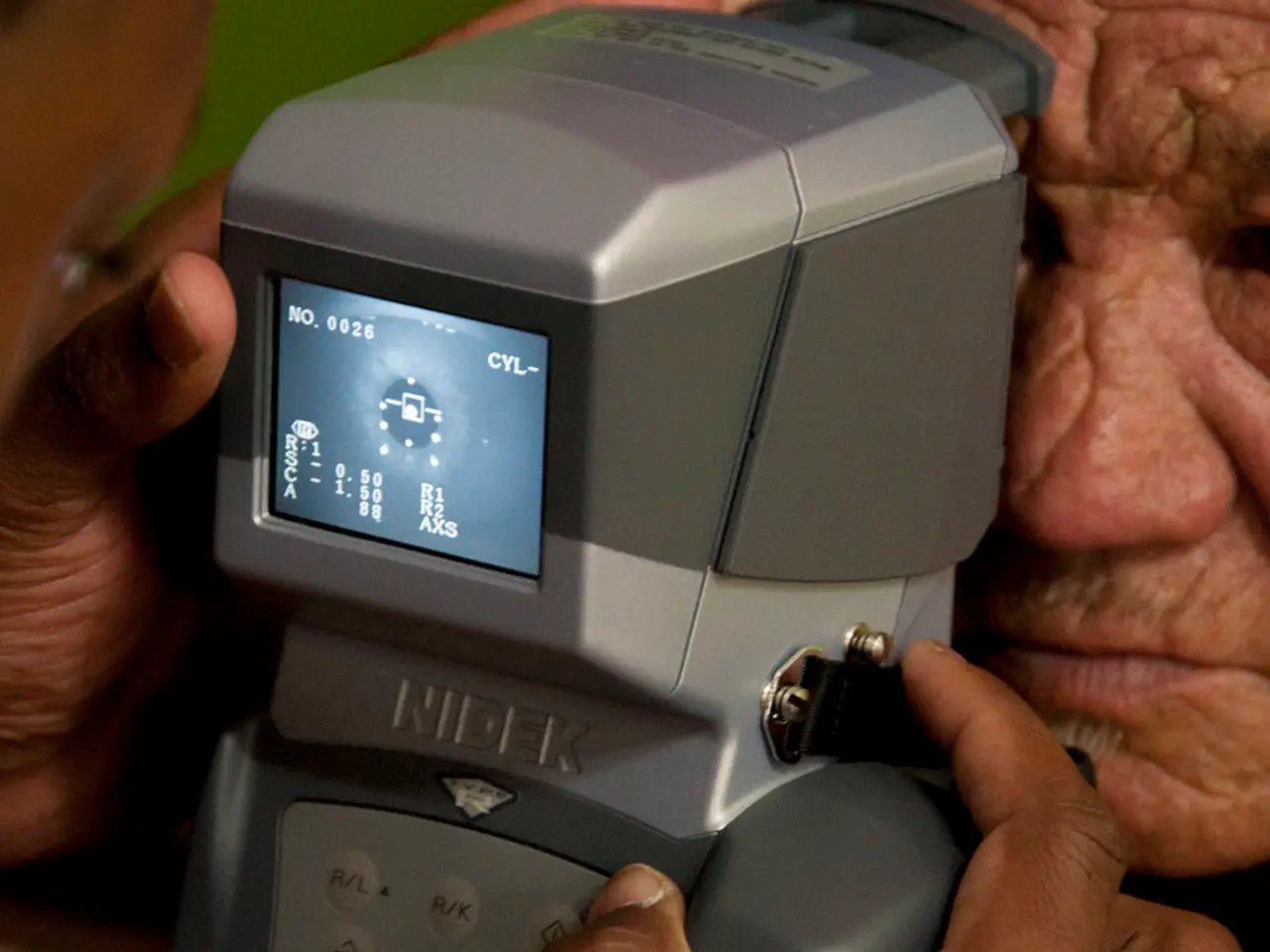Diabetic retinopathy's progressive form, characterized by the abnormal growth of new blood vessels in the retina, is known as proliferative diabetic retinopathy.
In the complex world of eye health, two stages of diabetic retinopathy stand out: Nonproliferative Diabetic Retinopathy (NPDR) and Proliferative Diabetic Retinopathy (PDR).
Nonproliferative Diabetic Retinopathy (NPDR) is the earlier stage, where high blood sugar causes damage to retinal blood vessels. This damage leads to weakened vessels that may leak fluid or blood, sometimes swell, and develop microaneurysms - tiny balloon-like vessel dilations. In its initial stages, vision may be unaffected or symptoms might be minimal. As NPDR progresses from mild to severe, more blood vessels become blocked, causing areas of the retina to suffer from insufficient blood flow.
On the other hand, Proliferative Diabetic Retinopathy (PDR) represents an advanced stage. In this stage, the ischemic retinal areas stimulate the retina to grow new, abnormal blood vessels - a process called neovascularization. These new vessels are fragile and prone to bleeding into the vitreous (the gel inside the eye), which can cause large floaters, vision loss, or retinal scarring and detachment if untreated. This abnormal vessel growth does not occur in NPDR.
Here's a comparison of the key features between NPDR and PDR:
| Feature | Nonproliferative Diabetic Retinopathy (NPDR) | Proliferative Diabetic Retinopathy (PDR) | |-------------------------------|---------------------------------------------------------------------------------------|-------------------------------------------------------------------------| | Stage | Early to moderate stages | Advanced stage | | Retinal blood vessels | Weakened, leaking (microaneurysms, hemorrhages, retinal swelling) | New abnormal blood vessels grow on retinal surface (neovascularization) | | Cause | Blood vessel damage and leakage | Retinal ischemia triggers vessel growth | | Symptoms | Often mild or asymptomatic initially; blurred or wavy vision due to edema | Floaters, vision loss, vitreous hemorrhage possible | | Risk | Can progress to PDR if untreated | Can cause severe vision loss or retinal detachment |
The progression is generally from mild NPDR (few microaneurysms), to moderate and severe NPDR (increased vessel damage and occlusion), then to PDR (neovascularization with its complications).
Early identification and control of blood sugar, blood pressure, and cholesterol can help prevent progression from NPDR to PDR. Regular eye exams are critical for detecting the transition to proliferative disease, which requires prompt treatment to reduce the risk of vision loss.
It's important to note that about half of people with diabetes eventually develop Diabetic Macular Edema (DME), where the blood vessels leak fluid into the macula, potentially leading to problems with vision.
In treating PDR, doctors may employ a variety of methods, including managing blood sugars, laser surgery, and vitrectomy - a surgical procedure to clear blood from the vitreous in cases of PDR. Anti-VEGF medication is also used to block vascular endothelial growth factor (VEGF) and prevent the growth of new abnormal blood vessels in PDR.
In conclusion, understanding the differences between NPDR and PDR is crucial in managing diabetic retinopathy and preserving vision. Regular check-ups and careful management of diabetes are key to preventing the progression to PDR and its associated risks.
Seekers of health and wellness should be aware of the differences between Nonproliferative Diabetic Retinopathy (NPDR) and Proliferative Diabetic Retinopathy (PDR), two stages of diabetic retinopathy that can impact eye-health. While PDR represents an advanced stage with new abnormal blood vessels growing on the retinal surface, NPDR is the earlier stage where retinal blood vessels become weakened and can leak fluid or blood.
In the complex medical-conditions and chronic-diseases landscape, diabetic macular degeneration is another eye-health concern. About half of people with diabetes eventually develop Diabetic Macular Edema (DME), where the blood vessels leak fluid into the macula, potentially leading to blindness.
Early identification and control of blood sugar, blood pressure, and cholesterol can help prevent progression from NPDR to PDR, reducing the risk of vision loss. As such, regular eye exams become crucial for detecting the transition to proliferative disease and receiving prompt treatment.
Several treatments are available for PDR, including managing blood sugars, laser surgery, vitrectomy, and anti-VEGF medication. These treatments aim to block vascular endothelial growth factor (VEGF) and prevent the growth of new abnormal blood vessels in PDR.
In summary, science plays a vital role in understanding diabetic retinopathy and developing effective treatments for personas affected by this condition, emphasizing the importance of regular check-ups and careful management of diabetes to preserve vision and maintain overall health-and-wellness.




